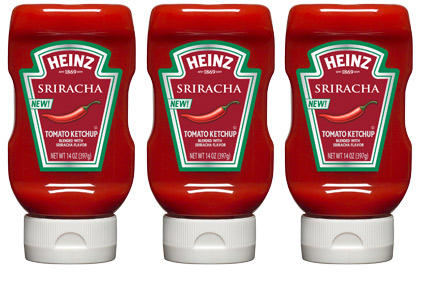The supermarket industry's "center store" of shelf-stable and frozen products is hardly sedentary. Take sriracha hot sauce, as the center store very much did.
Huy Fong Foods' "Rooster Sauce," a Southeast Asian style hot sauce with beguiling garlic notes, had simmered in the foodservice marketplace for decades as an Asian restaurant (and kitchen staff) favorite. But beginning in 2008 came shout-outs from Gourmet, the New York Times and Bon Appétit (which crowned sriracha as 2010 Ingredient of the Year).
A heat wave of sriracha ("hipster ketchup") followed. In the center store, sriracha fever meant me-too chili sauces (including Frank's, Kikkoman, Lee Kum Kee, Tabasco, Texas Pete, plus a paleo version from Caveman Chefs). The trend extended to sriracha-flavored ketchups and BBQ sauces (including Heinz, Stonewall Kitchen, and Trader Joe's, though not Kraft) and to sriracha-flavored potato chips and popcorn (including J&D's, Kettle, Lay's, Pringles, and Target's Archer Farms).
Beyond the center store, sriracha fever brought us everything from Produce Mom Picks' sriracha ginger cauliflower to the Los Angeles Sriracha Festival's sriracha crumble apple pie. Sriracha appeared everywhere short of the MyPlate icon from the USDA.
But the center store activity mostly involved robbing Peter to pay Huy Fong (or its imitators). Chili sauce did become a hotter category, with IRI retail tracking showing U.S. mass-market dollar sales of hot/Cajun sauce up 8.3% in 2014, with volume sales (often the more telling measure, in factoring out food inflation) up 4.8%. At the same time, however, ketchup dollar sales were up only 0.4%, with volume sales falling 2.6%, and dollar sales of BBQ sauce were up only 2.0%, with volume sales down 0.5%.
Enter the proposed merger of two center-store dragons, H.J. Heinz and Kraft Foods, reflecting these center-store doldrums in the U.S. supermarket industry. While international flavors such as sriracha allow the center store to kick up its heels, the food trends shaping what America eats primarily favor sales of fresh, natural, and local foods, rather than national brand processed foods in bottles, cans, and boxes. As Packaged Facts analyst Susan Porjes observes in Shopping for Local Foods in the U.S. (January 2015), "'local' has become a shorthand descriptor that makes food sound high quality, fresher, more authentic, trustworthy, environmentally friendly, and supportive of the local community."
With the goal post thus moved in the U.S. market, it's hard for center store giants to grow—and especially so, in the case of Kraft, in lockstep with stock market expectations. That leaves joining forces for international expansion as the single-best reason for combining these American-made food giants.
And, in doing so, Kraft Heinz will take notes from sriracha. What's sauce for the rooster is sauce for the merger.
